Chandra CXO
X-ray image of Mars
Mars Apparition 2024/2025
Perseverance Mars 2020 Rover
- softlanded on Mars February 18, 2021. Deployed Ingenuity helicopter
on Aptil 3, first helicopter flight April 19, 2021.
- Perseverance rover operating on Mars surface
- Ingenuity helicopter operated in surface-near atmosphere until
January 25, 2024, performed 72 flights; its mission concluded April 16
after last communication.
InSight, Nasa's 2018 Mars lander
- softlanded on Mars November 26, 2018, doing research on surface.
- Mission concluded December 21, 2022, last communication was on December 15.
Mars Atmosphere and Volatile Evolution
Mission (MAVEN), Mars orbiter
- arrived at Mars September 21, 2014, operating in Mars orbit
Mars Science Laboratory (MSL), Curiosity
- softlanded August 6, 2012 (UT)
- operating on Mars surface
Phoenix Mars Lander
- softlanded May 25, 2008 (UT)
- concluded mission on Mars November, 2008
2005 Mars Reconnaissance Orbiter
- arrived March 10, 2006
- operating in Mars orbit
2003 Mars Exploration Rovers
- Spirit on Mars, softlanded January 4, 2004 (UT), operated over 6 years,
mission concluded on June 8, 2011 (last contact March 22, 2010)
- Opportunity on Mars, softlanded January 25, 2004 (UT),
operating on Mars surface (over 14 years now),
silent since dust storm of June, 2018 (last contact June 10),
mission concluded February 13, 2019.
Mars Express
- arrived December 25, 2003
- operating in Mars orbit
2001 Mars Odyssey -
operating in Mars Mapping Orbit -
images -
latest
- arrived October 24, 2001
- operating in Mars orbit (about 23 years now)
Observing Alerts and New Mars Images (ALPO collection)
Planet Mars, Mars Exploration and Mars Missions
>>Mars Missions
>>Current and Future Mars Missions
This page is also
available in a more structured format
-
Evidence for Recent Sources of Liquid Water on Mars:
-
Mars Water Project (LPL)
- Life on Mars:
Nasa announced evidence;
in the Mars Meteorites found on Earth!
- Launch Sequence of all historic Mars missions
(and scheduled launch dates for future missions), with links to spacecraft
images and webpages
- Mars Today:
Current Appearance of and Weather on Mars
-
Find Mars in the sky now (current finder chart)
- Mars Ephemeris for
2025
-
Mars Ephemeris (2024-2025) by Jeff Beish, A.L.P.O. Mars Section
- Mars Basic Data
(under construction)
- Mars Oppositions
- Mars Events:
Data on Future Apparitions of Mars, after Jeffery D. Beish
- Mars 2025
- Mars 2022
- Mars 2020
- Mars 2018
- Mars 2016
- Mars 2014
- Mars 2012
- Mars 2010
- Mars 2007
- Mars 2005
- Mars 2003 (record opposition)
-
The 2024-2025 Apparition of Mars, by Jeffrey D. Beish
-
Observing the Planet Mars and
General Information for Apparitions of Mars, by Jeffrey D. Beish
- Mars Section of the
ALPO
-
Mars Observers: Yahoo group for telescopic Mars observers
-
Mars map with nomenclature (ALPO, Mars Watch)
- Occultations of Mars by Moon,
from 1701 AD to 2100 AD
- Mutual Planetary Transits
including Mars, from 1001 AD to 3000 AD
(from
Mutual Planetary Transits, Fifteen millennium catalog,
5,000 BC - 10,000 AD)
Last: Venus occulted Mars on October 13, 1590,
Next: Mercury will occult Mars on August 11, 2079.
- Transits on Mars
(from Transits Page)
-- These links to be restored!
-
Transits of Earth on Mars, Half million years catalog,
BC 250,000 - AD 250,000
-
Transits of Venus on Mars, Half million years catalog,
BC 250,000 - AD 250,000
-
Transits of Mercury on Mars, Half million years catalog,
BC 250,000 - AD 250,000
- The International MarsWatch
2007 - images
MarsWatch 2005 -
MarsWatch 2003 -
MarsWatch 2001 -
MarsWatch 1999 -
MarsWatch 1996-7 -
MarsWatch 1994-5
- MarsWatch Home
by Jim Bell
- Amateur images of Mars, including:
- Hubble Space Telescope images of Mars
-
Chandra CXO X-ray image of Mars -
Nasa MSFC Photo Release 02-284 (Nov 8, 2002)
-
The Planet Mars: A History of Observation and Discovery, by
William Sheehan. Online book, University of Arizona Press.
Mars Oppositions 1901-2035
- Center for Mars Exploration
(Nasa Ames and ; really cool stuff);
Mars Landing Site list
- Nasa Exploring Mars -
infos on future Mars exploration
- Ralph Aeschliman's new maps of
Mars, made from USGS Viking and MOLA data
- Live from Mars (ARC/Nasa)
- Mars Mission Research Center (NCSU):
Research for a Manned Mars Mission
-
Martian Chronicle at JPL
-
Case For Mars VI Conference 1996 Homepage
- The Mars Society
-
Romance and Reality: Moon and Mars expedition and settlement plans
- Dead Link!
Mission: Mars:
Engineering toward a crewed Mars mission, articles (Bill H. Clark II)
-
A Crewed Mission to Mars ... Scenario (NSSDC)
-
Nasa's Journey to Mars (2016..)
-
Stanford International Manned Mars Mission (text in various formats).
Also look at Illustrations for
this project and other Mars related artwork, from the
SEDS Space Art archive
- Mars Online Conference
-
Volcanism on Mars (Volcano World)
- Terraforming Mars,
informations by Christopher Burger
- Mars face: A nice landform on Mars.
Marsface homepage at Malin Space Systems
-
Percival Lowell's Original "Mars" book from 1895
-
Alfred R. Wallace' Is Mars Habitable? from 1907; a critical
examination on Lowell's "Mars".
From The Alfred Russel Wallace
Page by Charles H. Smith
-
Mars in Science Fiction Bibliography
-
Shallow Sky's Mars FAQ and links - Mars Observer's FAQ
- Mars page of
The Nine Planets multimedia tour of
Bill Arnett
- JPL's
Welcome to the Planets Mars page
-
Mars info from the U.S. Goelogical Survey
-
Exploring the Planets Mars page (NASM)
-
Stardate Solar System Guide's Mars page
-
ASU TES Solar System Tour Mars page;
Planet MARS Internet Links
-
Mars homepage and
Factsheet (NSSDC)
-
Photogallery of Mars (NSSDC)
-
Mars Atlas home page
- Mars Exploration Program
(JPL; includes mirror index)
-
Mars System Query page, Nasa's Planetary Photojournal
-
Mars edition of the ASP's "Universe in the Classroom"
Newsletter for Teachers (No. 9)
- Mars Millennium Project -
a National Arts, Sciences, Technology Education Initiative
-
The Whole Mars Catalog (astrobiology.com)
- West to Mars: Journey through the
possibilities. An appealing peace of art by Ken Fair of Mars West
Collaborative Project Organization.
- Explore Mars
page (LPI, JSC, Nasa)
- JSC's Lunar and Planetary Institute
offers the following
slide sets
(and image galleries)
on Mars.
These are powerful educational tools, and can also be purchased as 35mm
slide sets at low prices from LPI (look at their
online educational resources and price information).
-
Mars News and
Mars Link Directory from
Universe Today
- Mars Mission News (JPL; 1998)
-
Mars image collection (SEDS files archive)
>>Current and Future Mars Missions
- Launch Sequence of all historic Mars missions
(and scheduled launch dates for future missions), with links to spacecraft
images and webpages
-
ON MARS - Exploration of the Red Planet 1958-1978 - NASA SP-4212
Edward Clinton Ezell & Linda Neuman Ezell - The NASA History Series -
Scientific and Technical Information Branch, 1984. NASA, W DC
- Mariner 4, first successful spacecraft to Mars in 1964:
Mariner IV - First Flyby of Mars, some personal experiences.
By Bill Momsen.
- Mariner 9, first Mars orbiter in 1971, mapped the whole planet:
Mariner 9 image browser (Peter Masek)
- Viking 1 & 2 spacecraft:
Most successful Orbiter-Lander pairs, lauched August/September 1975 and operated
in Mars orbit and on Mars surface since mid-1976.
- Mars Observer spacecraft:
Launched September 1992, this spacecraft got lost on Mars Orbit Insertion in
August 1993.
-
Mars Global Surveyor
Mars orbiter, launched from KSC, Cape Canaveral on November 7, 1996,
9 a.m. EST. Reached Mars and successfully entered Mars orbit on
September 11, 1997; used aerobraking for achieving the low Mars orbit
required for the intended orbital investigations of the Red Planet,
which began in early 1998.
For almost a decade, the spacecraft undertook a most successful mission to
survey Mars from orbit, with instruments constructed for the lost Mars
Observer, and has provided numerous high-resolution images and valuable data
of the Martian surface and atmosphere.
Moreover, it has served as relay for the lander missions Mars Pathfinder, had
been intended to supplement unlucky Mars 96, and has provided photographic
support for the lander missions since, namely unlucky Mars Polar Lander in
1998-1999, and the successful Mars Exploration Rovers in 2003-2006.
Eventually, contact to Mars Global Surveyor was lost, probably due to
erroneous command sequence, on November 5, 2006, just two days before the
10-year anniversary of the spacecraft's launch.
- Russian
Mars 96
(previously Mars 94) was launched on November 16, 1996, but failed to leave
Earth's orbit, and decayed shortly after liftoff.
-
Mars Pathfinder (MPF) (previously named "MESUR" or "Pathfinder",
after landing renamed Carl Sagan Memorial Station)
and its rover Sojourner (previously Rocky IV, also MFEX rover):
Successful little Mars lander, lauched December 1996, operated in summer 1997.
- Japan's Nozomi (for Hope; former Planet B)
Mars orbiter was successfully launched on July 4, 1998 with a M-V-3
rocket, and flew 2 Lunar swingbys on September 24 and on December 18,
1998, and one Earth swingby on December 20, 1998. It was scheduled to
arrive at Mars on October 11, 1999, but due to a problem in its propulsion
system, got "insufficient acceleration" in its Earth flyby and consequent
course correction. A new orbit was calculated, and after two more Earth
swingbys on December 20, 2002 and June 19, 2003 and a delay of more than four
years, arrived in the neighborhood of Mars in December 2003 with a
re-scheduled orbital insertion in January 2004. Unfortunately, a correction
maneuver in December 2003 failed so that the mission had to be abandoned.
It was to study Mars' upper atmosphere.
Planet-B image [158k gif];
Nozomi information, images and links
from SEDS
-
Mars Climate Orbiter (previously named Mars Surveyor 1998 Orbiter):
Launched December 1998, this spacecraft got lost on Mars Orbit Insertion.
-
Mars Polar Lander (former Mars Surveyor 1998 Lander or
Mars Volatiles and Climate Surveyor (MVACS)):
Launched January 1999, this spacecraft got lost during descent to Mars surface.
Mars Polar Lander carried two small penetrators, Deep Space-2
(also got lost during descent):
-
Spirit, 2003 Mars Exploration Rover 2, MER-2,
Mars Exploration Rover A, MER-A,
Mars Surveyor 2003 Lander/Rover A: First of two Nasa sister spacecraft
(the other is Mars Surveyor 2003 Lander/Rover 1 or B), successfully launched
on June 10, 2003, with a Delta 2 (7425). After an interplanetary cruise of
almost 6 months and 303 million km (189 million miles), the spacecraft
arrived at Mars and successfully touched down on January 4, 2004, 4:35 UT
(January 3, 9:35 p.m. MST) in Gusev crater. The softlanding was performed in
direct approach and airbag-buffered, similar to the Mars Pathfinder of 1996.
The rover was investigating the landing site region.
Its activities include the photographical study the landscape, and the
investigation of samples samples from a 10 km range around the landing site,
picked up with a sampling arm.
Originally scheduled for surface operations of at least 90 days, this
spacecraft was continuously delivering images and data from Mars' surface
for over 6 years, has survived a global sandstorm and three times without
contact because of solar conjunctions. The last successful contact with the
Spirit rover has occurred on March 22, 2010, after which the spacecraft
fell silent and didn't reply to consecutive communication attempts.
The mission was concluded on June 8, 2011.
-
Opportunity, 2003 Mars Exploration Rover 1, MER-1,
Mars Exploration Rover B, MER-B,
Mars Surveyor 2003 Lander/Rover B:
Nasa successfully launched this second of two sister spacecraft (the other is
Mars Exploration Rover (MER) 2 or A) on July 7, 2003, with a Delta 2 (7425).
After an interplanetary cruise of more than 6 months,
Opportunity reached Red Planet Mars, and a successful softlanding occurred on
January 25, 2004, 5:05 UT (January 24, 10:05 p.m. MST) in the Meridiani Terra
region. As for its sister craft, the landing was performed using an airbag
system, similar to Mars Pathfinder of 1996.
The rover has started to investigate the landing site region, and is
scheduled to continue to do so for at least 90 days.
Its activities should include the photographical study the landing site, and
investigation of samples from a 10 km range around the landing site, picked
up with a sampling arm.
Opportunity's mission lasted until June 10, 2018 when last contact occurred
on its Sol 5111 (Mars day 5111) amid a planet-encircling dust storm on Mars.
The mission was concluded after a last uplink transmission on Sol 5352
(Feb. 12, 2019).
- Rosetta: Once intended as ESA's Mars, Asteroid and Comet
mission, and scheduled to be launched in January, 2003 by Ariane 5.
To achieve its more distant targets, it was to take a gravity assist
during Mars flyby on August 25, 2006. It would fly on and pass Earth
twice and two asteroids each once, before it had reached Comet Wirtanen
in August 2011, and finally landed on it one year later.
Now, Rosetta was successfully launched on March 2, 2004, and deployed its
solar panels soon after launch. After a first Earth gravity assist on
March 4, 2005, fly by Mars on February 2, 2007 for gravity assist
acceleration, followed by two further Earth gravity assist flybys in
November 2007 and November 2009.
The spacecraft visited asteroids (2867) Steins (flyby September 5, 2008) and
(21) Lutetia (flyby July 10, 2010).
In July 2011, it was put into deep space hibernation to save energy,
which it is scheduled to exit in January 2014.
It should reach Comet 67P/Churyumov-Gerasimenko in May 2014, start global
mapping of that comet in August 2014 and deliver a landerm Philia, in
November 2014.
Comet 67P/Churyumov-Gerasimenko will pass its perihelion in August 2015,
Rosetta is intended to continue investigating the comet until December 2015.
- Phoenix (NASA).
An in-situ volatile and organic molecule survey (LPL/Univ of Arizona).
Successfully launched on August 4, 2007, successfully softlanded on Mars
on May 25, 2008. The spacecraft investigated its landing site with great
success, obtained images and data, investigated soil samples and found hints
of water ice.
The mission continued to November 2008 when polar winter and polar night
came over the landing site. As expected, attempts to contact the lander
after winter have remained unsuccessful and were suspended in May 2010.
- Dawn (Nasa).
An asteroid mission to asteroids Vesta and Ceres, which did fly-by Mars for
gravity assist.
Successfully launched on September 27, 2007.
The Dawn spacecraft had a successful fly-by of Mars for gravity assist on
February 17, 2009, and took some images and measurements.
It is to continue its journey to asteroids Vesta (reached 2011 and 2012)
and Ceres (2015).
- Russian spacecraft Phobos-Grunt was scheduled as an ambitious
sample return mission to Martian moon Phobos. Together with this spacecraft,
Chinese intended Mars orbiter Ying Huo 1 was launched on the same
Zenit 3F rocket. Originally scheduled for launch in late 2009, the rochet
with the two spacecraft was launched on November 8, 2011.
Both spacecraft failed to leave Earth orbit: Contact was lost to
spacecraft in Low Earth Orbit, partly re-established around November 20,
but recovery attemtps remained unsuccessful:
Spacecraft suffered reentry on January 15, 2012, debris fell into Pacific
off the coast of Chile.
For Phobos-Grunt, plans had been to arrive at Mars in October 2012, return
to Earth in August 2014.
Ying Huo 1 should have entered Mars orbit in October 2012 for month-long
science operations.
- InSight (Nasa).
InSight (Interior Exploration using Seismic Investigations, Geodesy and
Heat Transport) is a Mars lander mission.
Formerly scheduled for launch around March 10, 2016, arrival September, 2016.
Successfully launched on May 5, 2018, arrival and softlanding on November 26,
2018. It was projected for on-surface operation of at least 720 days.
A stationary lander, it is to study the interior of Mars at its landing
site, using geophysical instruments.
The lander eventually worked and transmitted data to December 15, 2022.
Further communication attempts failed, and the mission was declared
concluded on December 22, 2022.
InSight information, images and
links from SEDS;
InSight Information (NSSDC)
InSight Homepage (Nasa)
- Hera (ESA).
Asteroid mission to double asteroid (65803) Didymos,
Mars flyby for gravity assist.
Successfully launched on October 7, 2024, with Falcon 9.
Successful flyby of Mars occurred on March 12, 2025, when spacecraft was
enroute to reach orbit around asteroid (65803) Didymos, on December 14, 2026.
Didymos and its satellite Dimorphos had been target of the DART mission
that had impacted on and slightly changed the orbit of Dimorphos on
September 26, 2022.
- Europa Clipper (Nasa).
Jupiter orbiter to study its moon Europa,
Mars (and Earth) flyby for gravity assist.
Successfully launched on October 14, 2024, with Falcon Heavy.
It performed a flyby Mars enroute to Jupiter and Europa for gravity assist
on March 1, 2025, and will also fly by Earth on December 3, 2026. It is
scheduled to reach Jupiter orbit and first flyby Europa on April 11, 2030.
Current and Future Missions:
Also look at the Launch Sequence of all historic
Mars missions (and scheduled launch dates for future missions)
Also note the older Mars Mission
schedule which was redefined after the failures of Mars Climate Orbiter
and Mars Polar Lander.
Launched 2001:
-
2001 Mars Odyssey, Mars Surveyor 2001 orbiter was
successfully launched on April 7, 2001 from Cape Canaveral with a Delta II
rocket, arrived at Mars after an over 6 month interplanetary cruise, and
was successfully inserted into Mars orbit on October 24, 2001 (see
Mars Orbit Insertion (MOI) information).
The spacecraft has now entered the phase of
aerobraking in order to lower its initial highly-excentric orbit.
It is intended to test aerocapture techniques (down to 120 km
above Martian surface !) for achieving its circular 400 km Polar orbit after
periapsis lifts. If this goes well, it will conduct science from orbit,
its primary science mission covering the time of January, 2002 through July,
2004. This Mars orbiter mission is to perform the research originally
scheduled for the lost Mars Climate Orbiter (Mars Surveyor 1998 Orbiter),
i.e., Mars wheather and climate.
Scientific investigations will be including mineralogical mapping and
radiation measurements, with its main instruments GRS (Gamma Ray Spectrometer)
from Mars Observer, THEMIS (Thermal Emission Imaging System) which is
developed under the direction of ASU, and MARIE (Mars Radiation Environment
Experiment). The spacecraft also served as communications relay for later
Mars landers (MER Spirit and Opportunity, Phoenix, MSL Curiosity, Insight)
and may continue for future missions.
Launched 2003:
-
Mars Express (ESA).
Launched on June 2, 2003 with a Russian Soyuz/Fregat rocket.
Orbiter and lander "Beagle 2".
After a journey of almost 6 months, the spacecraft came near Mars in December
2003, and succesfully released the Beagle 2 lander on December 19. The
orbiter was successfully inserted into Martian orbit on December 25, 2003,
shortly before the lander entered the Martian atmosphere and reached the
Martian surface in Isidis Regio. While the orbiter mission is working
successfully, unfortunately, the lander could not be contacted after landing
despite intensive efforts for several weeks to establish communication or
clear up the lander's state, and is believed and declared lost in late
January 2004.
The Mars Express orbiter started its scientific mission and is busily taking
photographs and data from its orbit around Mars since. It has also served
as relay for later lander missions.
Launched 2005:
- Mars Reconnaissance Orbiter, Mars Surveyor 2005 Orbiter.
Successfully launched on August 12, 2005 by an Atlas V rocket.
Arrive at Mars on March 10, 2006, successfully entered a highly excentric
Mars orbit, performed an aerobraking phase until about November 2006.
It s performing an extensive study of Mars from orbit during its science
mission from November 2006 onward, performed high-resolution measurements
including images with a resolution of 20 to 30 cm, including photographs of
old and new Mars landers and rovers. It also served as communications relay
for later Mars landers Phoenix in 2008 and Curiosity (Mars Science Laboratory)
in 2012; it also obtained photos of these spacecraft during and after
landing.
Launched 2011:
- Curiosity, Mars Science Laboratory (MSL),
Mars Smart Lander, Mars 2011 Mobile Scientific Laboratory
(Nasa), formerly scheduled for 2007 and 2009.
Successfully launched on November 26, 2011.
After an 8-month interplanetary cruise, it arrived at Mars and successfully
softlanded on Mars on August 6, 2012.
It is scheduled to perform a 2-year science mission.
This mission includes new technologies: A small long-range, long-duration
rover, powered by a small nuclear reactor, equipped to perform many
scientific studies of Mars, and to demonstrate the technology for accurate
landing and hazard avoidance in order to travel to difficult-to-reach sites.
Launched 2013:
- Mangalyaan (India)
Mars Orbiter Mission (MOM).
Successfully launched with a PSLV-C25 on November 5, 2013.
Arrive at Mars on September 23, 2014, operating in Mars orbit.
- MAVEN (Nasa).
Mars Atmosphere and Volatile Evolution Mission.
Orbiter to explore the planet's upper atmosphere, ionosphere and
interactions with the sun and solar wind.
Successfully launched on November 18, 2013,
Mars Orbit Insertion on September 21, 2014,
operating in Mars orbit.
Launched 2016:
- ExoMars 2016 (ESA).
Sucessfully launched on March 14, 2016; formerly scheduled for 2013, 2011
and 2009.
Includes an orbiter (ExoMars/Trace Gas Orbiter) and a demonstration
lander (EDM: Entry Descent and Landing Demonstration Module), to demonstrate
ESA's capability to land on Mars. Arrival at Mars occurred in October 2016.
After separation, EDM Schiaparelli attempted to land on target site, but
got lost, probably crashed; the lander had been to perform science operation
for about a week.
The orbiter was inserted into Mars orbit, its orbit adjusted was until mid
2017 when its science mission commenced; this is planned to continue through
the year 2022.
The ExoMars rover formerly scheduled to be carried by this mission is now
delayed and considered to be carried by ESA's ExoMars 2022 (former 2020)
mission.
ExoMars 2016 homepage and
ExoMars general info (ESA)
Launched 2020:
- Hope, UAE Mars Mission (United Arab Emirates)
Mars Orbiter, launched July 19, 2020. Entered Mars orbit on February 9, 2021,
doing science in Mars orbit.
- Tianwen 1 (China)
Mars Orbiter, Lander and Rover.
Launched July 23, 2020. Enterred Mars orbit on February 10, 2021.
Lander softlanded on April 28, 2021.
Orbiter operational in Mars orbit.
Both lander and rover operating on Mars surface.
- Perseverance, Mars 2020 Rover (Nasa).
Mars science rover mission, details in definition, also to carry a Mars
helicopter.
Also previously and preliminarily nicknamed Curiosity 2.
Successfully launched on July 30, 2020.
Successfully softlanded on Mars surface on February 18, 2021.
Deployed Ingenuity helicopter on April 3, which undertook its first
flight on April 19, 2021.
Both doing research on Mars surface, helicopter in atmosphere close to
surface.
Mars 2020 information, images and links from SEDS;
Nasa Announce of Multi-Year Mars Program;
Mars Future Rover Plans and
news (JPL);
Mars 2020 Preseverance Rover Mission Page (JPL)
Launched 2023:
- Psyche (Nasa).
Asteroid mission to (16) Psyche, Mars flyby for gravity assist.
Successfully launched on October 13, 2023, with Falcon Heavy.
To flyby Mars in May 2026 enroute, to reach and enter orbit of
asteroid (16) Psyche in October 2029.
Launched 2025:
- Tianwen-2 / ZhengHe (China).
To be launched 2025.
Scheduled for a 2027 flyby en-reoute to comet 311P/PanSTARRS for
comet sample return mission.
To be launched 2025:
- Escape and Plasma Acceleration and Dynamics Explorers (EscaPADE)
(Nasa).
Two Mars orbiters, Blue and Gold. Part of SIMPLEx program.
To be launched in November, 2025, with New Glenn rocket.
Formerly scheduled for launch in August, then October, 2024.
To reach Mars in early 2026 and enter a highly elliptical orbit,
which should be lowered to an almost circular science orbit.
To be launched 2026:
- Martian Moons eXploration (MMX) (Japan, JAXA).
Phobos sample Return mission.
Scheduled for launch in December 2026.
- Commercial Mars Lander (Relativity Space or Impulse Space).
First commercial Mars lander, tentatively scheduled for launch in 2026.
- Icebreaker Life (Nasa).
Lander based on Phoenix and Insight concept.
To land near Phoenix landing site with astrobiology science instruments.
- SpaceX Uncrewed Mars Landing, scheduled for 2026.
A lander with cargo for crewed Mars infrastructure.
To be assembled in Earth orbit with about 16 "Starship" launches.
To be launched 2028:
- Mars Sample Return Mission (MSR) Orbiter (Nasa/ESA).
To be launched 2027.
To take over the samples returned by MSR lander ascend module, and
deliver them back to Earth.
Scheduled sample return in 2033.
- Mars Sample Return Mission (MSR) Lander (Nasa/ESA).
To be launched 2028.
To land at Jazero Crater near the Perseverance Mars Rover site,
collect the samples deposited by the Perseverance Mars rover, and
return them to Mars Orbit (MSR orbiter).
- ExoMars Rover, Rosalind Franklin (ESA).
Formerly named "Exomars 2020", "Exomars 2022", and "Exomars 2024."
Was scheduled for launch about September 22, 2022 with Russian Proton,
but suspended indefinitely. Alternative launch options are evaluated.
The rover is in need to find a non-Russian lander platform, which
will deliver ESA's ExoMars rover. Formerly scheduled to be included in ESA's
ExoMars 2016, then with Nasa's Mars 2018, then for 2020), landed by a
"Sky Crane," similar to MSL lander, and to land via a surface platform.
ExoMars rover should be a highly mobile rover, weighing up to 200
kilogrammes. It is to collect samples with a drill and analyse them.
(Old) ExoMars 2020/2022 homepage and
(Old) ExoMars general info (ESA)
- Tianwen-3 (China).
Mars Sample Return Mission. Two spacecraft: One orbiter and return module,
one lander/ascent module with mobile sampling robot.
- TEREX-1 (Japan, JAXA).
Orbiter mission scheduled for mid-to-late 2020s.
- Next Mars Orbiter (NeMO) (Nasa).
Orbiter mission scheduled to be launched in the late 2020s.
High-resolution imaging system and communications relay.
2028/29:
- SpaceX Crewed Mars Landing.
Lander with crew and cargo.
To be assembled in Earth orbit with about 16 "Starship" launches.
Other proposed missions for the mid-to-late 2020s:
- MELOS (Japan, JAXA).
Mars rover concept of 2015. Proposed for launch in or after 2024.
- SatRevolution (Poland).
Mars Orbiter proposed for launch in or after 2022/2024 (2019, 2021).
- Mars Grunt (Russia)
Mars Saple Return mission proposed for NET 2024.
To be launched 2031:
- Mars Lander Mission, Mangalyaan 2 (India, ISRO).
Tentatively scheduled to be launched in 2031.
Lander mission including a rover, helicopter, sky crane, and supersonic
parachute.
Formerly scheduled as Mars Orbiter Mission 2 (MOM 2),
to be launched in late 2024, and expected to operate for about 1 year
in Mars orbit of height 200 to 2000 km height.
Note: Some missions are still in the early planning stage.
Formerly Proposed missions
Formerly proposed for launch in 2007:
- Mars 2007 Small Scout Missions (Nasa), tentatively scheduled for launch
in December 2006, arrival at Mars February, 2009, science mission February to
August, 2009.
One or more of a series of small "scout" missions, including small landers,
airplanes and balloons.
Nasa Press Release 02-238 of Dec 6, 2002,
Solar System Exploration: Missions: Mars: Mars Scout (JPL),
Mars 2003 and 2005 page (NSSDC),
2005 and Beyond (JPL)
The proposed missions selected for study are, besides the selected winner
Phoenix:
- Mars 2007 Remote Sensing Orbiter (CNES, French Space Agency),
scheduled for launch in late 2007.
Remote Sensing Orbiter.
Mars 2003 and 2005 page (NSSDC)
- Mars 2007 Communications Orbiter (ASI, Italian Space Agency),
scheduled for launch in late 2007.
Communications orbiter for Netlanders and future missions.
Mars 2003 and 2005 page (NSSDC)
- Mars 2007 Netlander (CNES, French Space Agency),
formerly scheduled for launch with an Ariane 5 in late 2007, now
postponed indefinitely.
Network of 4 small landers to perform scientific measurements on the surface of
Mars over one Martian year.
Netlander homepage;
Mars 2003 and 2005 page (NSSDC)
Formerly proposed for launch in 2009:
- Beagle 2: Evolution (ESA), scheduled for launch in late 2009.
Mars Lander.
Formerly scheduled for 2013/14 and later:
- Mars Scout 2 (Nasa).
A mission succeeding and extending the 2007 Mars Scout, Phoenix; details
to be defined.
Solar System Exploration: Missions: Mars: Scout 2 (JPL),
Mars 2003 and 2005 page (NSSDC),
2005 and Beyond (JPL)
- Mars 2014, Mars Sample Return Lander (Nasa, France, Italy,
international?; former Mars 2011),
under study for launch in early 2014. Possible first sample return mission.
To arrive at Mars in late 2014, launch from Mars early 2015, and
return to Earth in late 2016.
Mars 2003 and 2005 page (NSSDC),
2005 and Beyond (JPL)
- Mars 2016 (Nasa, international?; under study).
Possibly another sample return mission, or orbiters, landers, rovers.
Mars 2003 and 2005 page (NSSDC),
2005 and Beyond (JPL)
Formerly scheduled to be launched 2018:
- Mars 2018 (Nasa).
Scheduled for launch in May 2018, to arrive at Mars in January 2019.
This lander was land two rovers, each one of NASA and ESA's ExoMars
rover (formerly scheduled to be included in ESA's ExoMars mission of 2016),
landed by a "Sky Crane," similar to MSL lander.
ExoMars rover should be a highly mobile rover, weighing up to 200
kilogrammes; this should now go separately in 2018.
Nasa's Mars 2018 rover should collect soil and rock samples of scientific
interest for later pick-up by future sample return mission.
Mars 2018 Mission page (JPL Mars Exploration Program)
For the time after 2020, a continuation of the research missions was and is
planned.
Detailed plans are still to be worked out, and should utilize the newly
acquired knowledge of the current and scheduled Mars missions.
Crewed Missions to Mars
Since the 1950s and earlier, numerous investigations, plans and proposals
have been outlined and published for a crewed mission or crewed missions to
Mars. The relevant science and technology is basically longly known and
steadily improving.
Current preliminary estimates, given by current US government and elsewhere,
place the timeframe to around the 2030s (see
Nasa's Journey to Mars
webpage, around 2016..).
The opinion of the present author is that, persistent political willingness
given, such a mission could be achieved within about 10 years after
commencing the effort.
Formerly, Nasa officials had expressed their intention that these efforts
should eventually be leading to a Mars mission with a human crew to be
launched in 2018 (and to arrive at Mars in 2019), and to begin an era of
permanent human presence on our neighbor planet.
Moreover, this date is continuously under discussion with the aim to do
the mission sooner (The earliest (now outdated) proposition was a crewed
mission as early as 2007, while CNN has reported
plans for a crewed mission in 2012 !)
A vision presented by the President of the United States in January, 2004
had proposed a crewed Mars mission following the establishment of a
permanantly crewed Moon base which should be built between 2015 and 2020,
after completing the assembly of the International Space Station and the
development of a new space transportation system in about 2010. In the
scenario of this plan, a crewed Mars mission could have occured in or after
the year 2019.
A Crewed Mission to Mars ... Scenario (NSSDC),
after NASA Special Publication #6107
Comments, corrections, and propositions to this page are welcome !
Contact me !
![[StudyWeb Award]](sw_award.jpg)
The SEDS Mars Exploration page has been selected
as featured site in StudyWeb as one of the best educational resources on the Web.
![[Britannica.com Award]](brit_aw.jpg)
The Mars Exploration page has been
awarded by Britannica.com
as one of the best sites on the Internet when reviewed for quality, accuracy of
content, presentation and usability, and rated as
a Recommended Site.
Hartmut Frommert
[contact]
![[Spider] @](../Jco/spider.ico.jpg)
![[SEDS]](../Jco/seds.jpg)
Last Modification: August 9, 2025
![[HST views of Mars]](hst-mars.jpg)
![[HST views of Mars]](hst-mars.jpg)
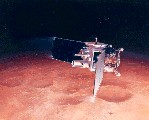
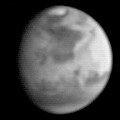


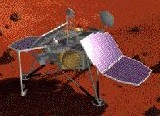
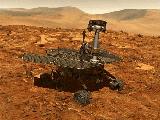

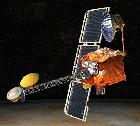
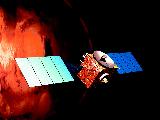
![[StudyWeb Award]](sw_award.jpg)
![[Britannica.com Award]](brit_aw.jpg)